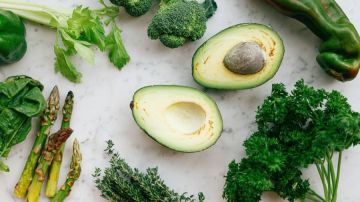10 of the Most Nutritious Foods Used in Latin American Cooking
Several years ago, I actually started paying attention to the foods that I was eating, prioritizing nutritional value and making an effort to learn about the benefits specific foods can offer the body

Photo: Pexels/Daria Shevtsova
Several years ago, I actually started paying attention to the foods that I was eating, prioritizing nutritional value and making an effort to learn about the benefits specific foods can offer the body. I’m not a health nut by any means, but I try my best to eat a nutritious and balanced variety of foods each day in order to help my body perform at its best. Something unsettling I’ve discovered throughout that process is that many people assume that Latin cooking is unhealthy by nature, and yet many of our foods have been co-opted by fad diet gurus and Instagram and YouTube wellness influencers promoting certain diets or ways of eating.
The reality is, many of our traditional Latin American foods are actually insanely nutritious and have helped our people survive generation after generation. Our ancestral foods are incredibly nutrient-dense, satisfying and absolutely delicious. We’ve been eating superfoods our entire lives! Just skip the deep frying and heavy oils and choose to boil, roast, grill or sauté instead, and you’ll reap the benefits.wp_*posts
Beans
Beans are vilified by certain “diets” like Whole 30 and some low-carb diets, because they are starchy and high in carbohydrates. However, they are one of the best plant-based source of protein and they are full of fiber which aids in digestion and a healthy gut is also good for your immune system. Plus, they come in so many varieties that are suited for different dishes.
wp_*posts
Avocados
Most Latinos grew up eating aguacate, but when it became trendy (we see you avaocado toast) everyone acted like it was something new when it’s been a staple in LATAM for decades. Avocados are full of the healthiest kinds of fat, Vitamin C, B vitamins, magnesium and a number of other nutrients. Plus, it’s super versatile and can be eaten with just some lemon juice and salt, made into guacamole or even thrown into nutritious smoothies.wp_*posts
Plantains
Platanos are chock-full of vitamins and minerals, and even though many of us are used to eating them fried, they are delicious many other ways. They have significant amounts of magnesium, potassium, fiber, Vitamin C, Vitamin A and Vitamin B-6. Tip: they are delicious and crispy when prepared in an air fryer.wp_*posts
Pumpkin
Calabaza or pumpkin is a very common ingredient in Latin American cooking that is often used in stewed beans and sopitas. It is an incredible source of Vitamin A and also has significant amounts of Vitamin B-6 and Vitamin C. The seeds are also a tasty and healthy snack when roasted. Try them seasoned with sazon or adobo.wp_*posts
Quinoa
Quinoa is an ancient grain that became super trendy in health and wellness circles several years ago and has become a staple for many families in America. The grain is originally from Peru is common in traditional foods like quinoa atamalada (tamale-like). It was a staple for the Incas and other indigenous peoples so it’s been a staple in nutritious dishes for generations.
wp_*posts
Hominy
Hominy is common in Southern cuisine though it’s known as grits but the preparations in LATAM are similar with the maize kernels used in soups like pozole or mazamorra. It’s a healthy, whole grain that’s low in fat, full of fiber and it actually increases the bioavailability of Vitamin B, which means the body can absorb it more easily. wp_*posts
Chilis
Chilis are an excellent source of Vitamin C and they are known to fight inflammation, boost metabolism and aid in weight loss and lower blood pressure in addition to many other benefits. So whether you’re eating them cooked into moles or in a batch homemade pique, they are an excellent, nutritious addition to any diet.wp_*posts
Yuca
Yuca or cassava is a root that’s used in dishes throughout Latin America and is often traditionally prepared boiled and simply served with extra virgin olive oil or grated or mashed into other dishes. It’s packed with nutrients like potassium, choline, Vitamin C and it’s an excellent source of fiber. Because of its texture and taste after being roasted it’s a popular substitute for traditional potato fries.
wp_*posts
Nopales
Nopales or cactus, has been a source of nutrition throughout Central America—Mexico in particular—for many centuries. They are super healthy, and interestingly, they are an excellent plant-based source of calcium. They also contain iron, copper, magnesium and Omega-3 fatty acids, which are essential for heart health.wp_*posts
Annatto
Annatto which is called achiote in Spanish is typically used to added a vibrant yellow-orange color to foods in countries throughout Latin America. It’s a complete natural food coloring! Although its small seeds barely even look like food, it’s actually really healthy and has wonderful antioxidant properties. It’s also a good source of Vitamin E and has antimicrobial properties.















